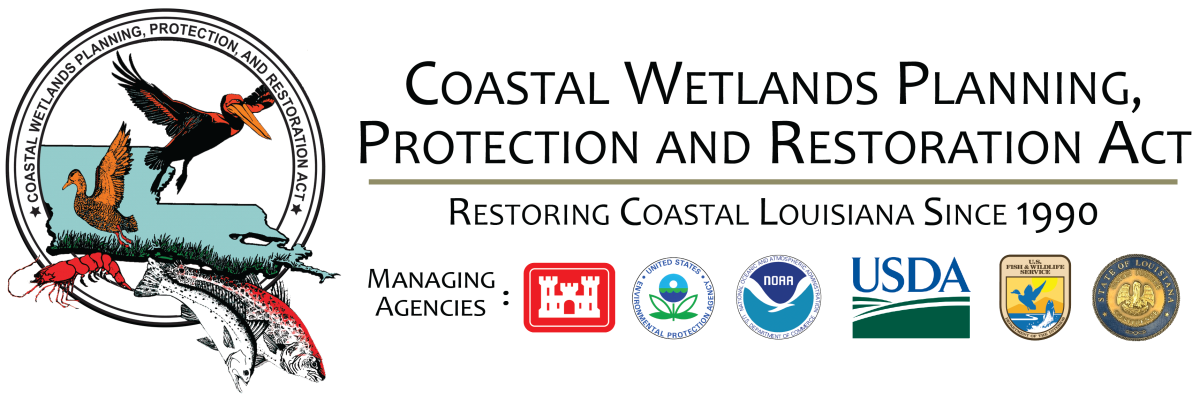
The primary causes of land loss in the project area are oil
and gas canals, subsidence, and sediment deprivation, which
have resulted in an estimated rate of -0.41% per year based
on hyper-temporal analysis conducted by USGS for the
extended project boundary for the years 1984 to 2012.
Bounded by Bayou Lafourche to the east and Timbalier Bay
to the west the project area is also subject to shoreline
erosion.
This project would create 302 acres of saline inter-tidal marsh
and nourish 312 acres of emergent marsh using material
dredged from the Gulf of Mexico, southwest of the project
area. Earthen containment dikes will be constructed along
the project boundary to contain the material. Vegetative
plantings are planned at a 50% density, with half planned at
TY1 and half planned at TY3 if necessary. Containment
dikes will be degraded or gapped by TY3 to allow access for
estuarine organisms. Funding will be set aside for the
creation of tidal creeks if needed. This project, along with
TE-23 West Belle Pass Headland Restoration and TE-52
West Belle Pass Barrier Headland Restoration, will help
stabilize the edge of the marshes and protect Port Fourchon
from the west. The initial construction elevation is +2.4 feet
NAVD 88; after settlement, marsh is expected to be +1.4
NAVD 88.

The project is located in Region 3, Terrebonne Basin, in
Lafourche Parish.
This project was approved for Phase I Engineering and
Design in January 2015.
This project is on Priority Project List (PPL) 24.
The West Fourchon Creation & Nourishment Marsh sponsors include:
- Federal Sponsor: National Marine Fisheries Service
- Local Sponsor: Coastal Protection and Restoration Authority



























